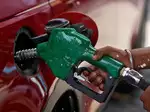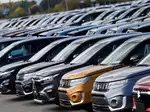Electric penetration in India’s public transportation sector to reach up to 40% by FY30: ICRA

The central government has rolled out several schemes, including the PM e-Bus (electric buses) Sewa, to support the electrification of public transport.
Government subsidies, along with lower ownership costs, diverse OEM portfolios, demand aggregation by GoI-backed entities, development of technologies and reduced electric battery prices will further give a push to electrified public transport system, according to the credit rating agency's report.
e3Ws to rule
Currently, at a broader level, electric penetration is at low single-digits across most segments. In FY24, the penetration was 7% in e-buses, 9% in e3Ws (electric three-wheelers), and negligible in e-LCVs (electric light commercial vehicles).
However, by 2030, ICRA estimates e3Ws will have a major share of electric penetration at 40%, followed by e-buses (30%), and e-LCVs (12-16%). Adding to this, e2Ws (electric two-wheelers) and electric cars are projected to reach 25% and 15%, respectively.
Paving the way for increased auto ancillaries revenues
With the electrification of the Indian automobile industry rising, ICRA projected that the automotive component may incur a capital expenditure (capex) of INR 25,000-INR 30,000 crore in FY26. This capex will be utilised for capacity expansion, localisation and capability development, and technological advancement (including EVs), among others.
Currently, only 30-40% of the electric vehicles (EV) supply chain is localised, and components such as traction motors, control units and battery management systems have seen significant localisation in recent years, while battery cells, which constitute 35-40% of vehicle cost, are still entirely imported, ICRA said in its findings.
Export potential
Low localisation level, currently, can bring manufacturing opportunities for Indian domestic auto component suppliers in the coming years.
"Exports, which account for close to 30% of the industry’s revenues, are likely to be impacted by subdued vehicle registration growth in target markets. However, factors like rising supplies to new platforms, driven by vendor diversification initiatives by global OEMs/Tier-Is, and higher value addition, partly stemming from increased outsourcing, bode well for Indian auto component suppliers," said Vinutaa S, Vice President and Sector Head – Corporate Ratings, ICRA Limited.
The rating agency asserted that this will also increase export opportunities for these components. Parts for e2Ws and e-PVs (electric passenger vehicles) are expected to lead the electrification trend in ancillaries.
ICRA also stated that India could potentially grow in metal castings and forgings due to the closure of plants in the EU (European Union) amid viability issues. The aftermarket, comprising used car sales and the aging of vehicles in the global market, would boost exports for the replacement segment.

